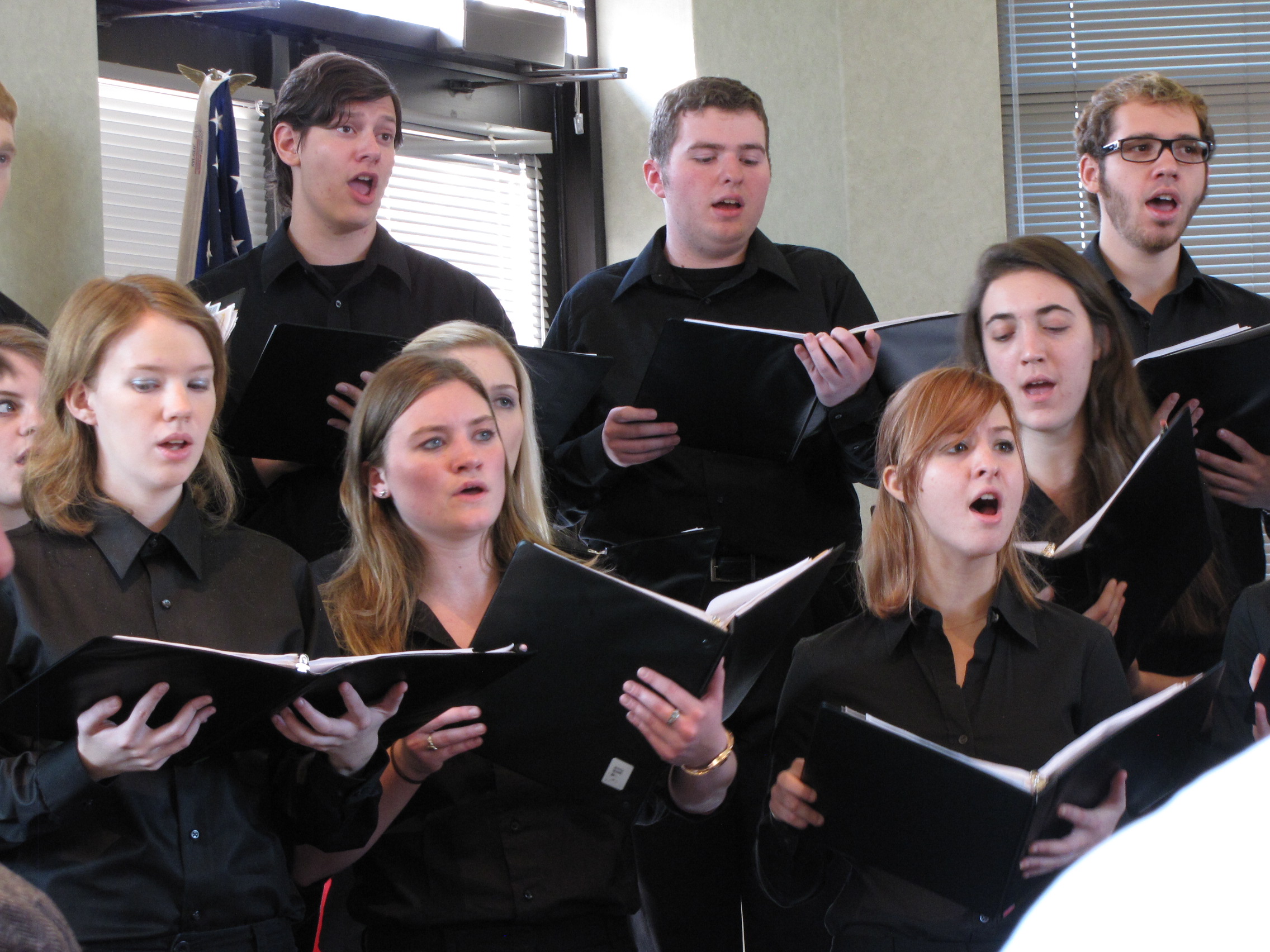
By Emily Hostetler
Assistant Copy Editor
Ohio Wesleyan’s Chamber Choir will be showcasing their voices while learning music history abroad next semester as they travel together to Italy.
A selection of 24 students from the Choral Art Choir were chosen for the Chamber Choir that will be traveling to Italy with their director, Jason Hiester, assistant professor of music, over Spring break as part of a traveling learning course.
On Saturday, the Choral Art and Chamber Choir performed in the Hamilton-Williams Campus Center Benes rooms to raise money for the Chamber Choir’s trip.
The money made from the concert will be split between the students, in addition to the $24,000 grant from OWU that is being split between the Chamber Choir.
The choirs performed a collection of Italian songs, with introductions to each song by the students explaining the music or performance quality of the pieces.
Senior Elizabeth Blakeslee informed the audience that the first piece performed as the choirs marched into the room was a balletto by Giovanni Gastoldi, a genre meant to be sung, played and danced as balletto comes from the Italian word “bolero,” to dance.
Hiester said the pieces surveyed at the recital were from the Renaissance and Baroque period and were secular, non-religious, or sacred, religious.
The choirs performed 10 pieces for the audience and some songs even included percussion accompaniment.
Next semester, the Chamber Choir will continue to increase their repertoire as they prepare for their performances in Italy.
The choir will be traveling to Venice, Sienna and Florence to perform three to four times, while learning about Italy, Italian culture and music history.
“There’s a wealth of amazing choral music in Italy that came out of Italy,” Hiester said.
“In fact, it was just a major musical center for so much of the renaissance, so much of the baroque, so much of the classical.”
After doing a lot of research on Italy, Hiester thought it would be a great idea to take the chamber choir there to learn more about the master composers’ work.
“It’s a place I wanted to come more acquainted with on a personal level, to be there and to just walk in the shoes of what other composers have done,” he said.
The choir, along with Hiester and several other chaperones and guests, will leave for Italy March 9 and return March 18.
Sophomore Calla Loadman said she is really excited about leaving the country for the first time and traveling to Italy.
“Italy is one of those spots you have to go to,” she said.
“Dr. Hiester wants us to have the opportunity to be in that type of setting and to see where the music we are singing came from.”
One of the places the choir will be performing is the St. Mark’s Basilica, where they will be singing a mass.
Hiester said it is important for students to experience what they are learning about outside of the classroom.
“As music students, we sit in classrooms and talk about these masters but, to go there and to actually see the buildings that they worked in,” Heister said.
“St. Mark’s Basilica has been there for over 1,000 years. Major composers, all of them worked in that basilica, and to be able to go into and be able to sing a mass in the place those composers were at that’s pretty amazing to get that close to music history,” he said.
“It’s almost like tasting it and touching music history. And it’s so different from being in a classroom and it being kind of abstract, but to be in there and to stand in the sanctuary and to hear and to see and to taste and to smell and to touch is just real learning.”
Junior Ally Kirchberg has already traveled to Italy twice before, but can’t wait to go back, especially with the choir.
“This will be my third time in Florence and Venice but my first time in Sienna,” she said.
“I love the Italian culture. I love the art, the food and the atmosphere. It’s a place I feel comfortable because I’ve taken Italian for so long.”
Hiester said he wants students “to see what they (the masters) saw that influenced their composition,” but students will also be experiencing some shared musical experience and a cultural exchange as they perform with local choirs at various locations and universities.
The music picked for the Chamber Choir to sing can all be linked back to Italian history.
Hiester said all of the singing is a cappella because transporting instruments would be impractical.
Most of the songs are from the Renaissance period and less of the Baroque period because a lot of Baroque pieces have concertizing music.
When the chamber choir is not performing, they will be sight seeing at major musical and artistic sites in the different cities that they are visiting while keeping in mind relating what they are learning on site to the music history they learned in the classroom.
